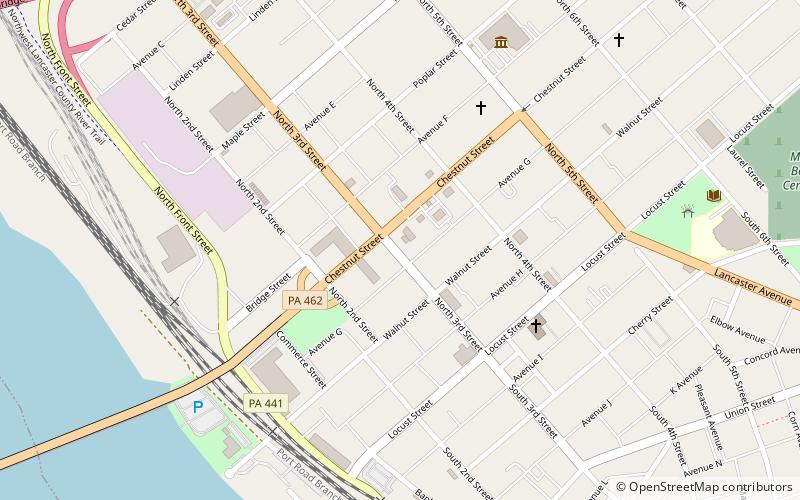Susquehanna and Tidewater Canal, Columbia


Facts and practical information
The Susquehanna and Tidewater Canal between Wrightsville, Pennsylvania, and Havre de Grace, Maryland, at the head of Chesapeake Bay, provided an interstate shipping alternative to 19th-century arks, rafts, and boats plying the difficult waters of the lower Susquehanna River. Built between 1836 and 1840, it ran 43 miles along the west bank of the river and rendered obsolete an older, shorter canal along the east bank. Of its total length, 30 miles were in Pennsylvania and 13 miles in Maryland. Though rivalry between Philadelphia, Pennsylvania, and Baltimore, Maryland, delayed its construction, the finished canal brought increased shipments of coal and other raw materials to both cities from Pennsylvania's interior. Competition from railroads was a large factor in the canal's decline after 1855. Canal remnants, including a lock keeper's house, have been preserved in Maryland, and locks 12 and 15 have been preserved in Pennsylvania. A copy of a detailed survey blueprint of the entire canal system including structures and property ownership details was donated by the Safe Harbor Water Power Corporation to Millersville University. The survey consists of 67 pages, 98 x 30 cm. and is undated but the assumption is the original was created while the canal was in use. ()
ColumbiaColumbia
Susquehanna and Tidewater Canal – popular in the area (distance from the attraction)
Nearby attractions include: Chickies Ridge, National Watch and Clock Museum, Wright's Ferry Mansion, Columbia Market House.






